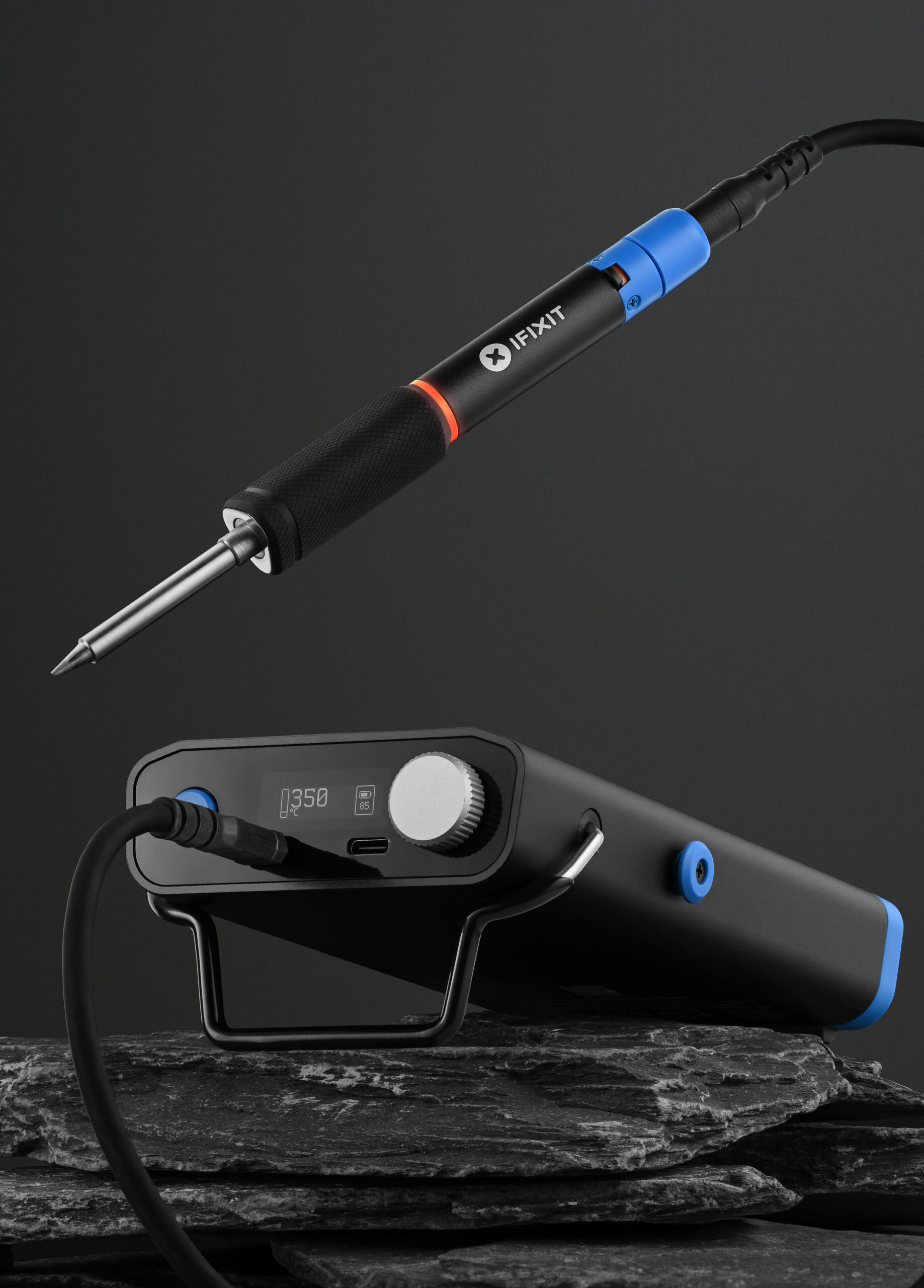
[ad_1]
When my Nintendo Switch started to experience Joy-Con drift, the first thing I did was look for an iFixit guide to replacing the joystick. They second thing I did was order iFixit’s all-inclusive repair kit. And the third thing I did was combine both to have a better-than-new Joy-Con in under ten minutes, with zero drift problems since. I have iFixit kits in my purse and backpack, on my desk and each of my workbenches – I guess it’s fair to say I’m a pretty huge fan of both their “never take broken for an answer” ethos, and the high-quality solutions that they provide to back it up. So I was exceedingly excited when a large box arrived last week (under embargo) full of exciting goodies! I mentioned my backpack, which is a several-dozen-pound wearable hackerspace, and has seen me well through countless hackathons, Maker Faires, and other techie events. But there was a glaring omission from my conveyable cyber citadel: the ability to solder on-the-go. Imagine my joy as I opened the delightfully iFixit-logo-emblazoned packaging to discover a sleek, lightweight, USB-C-powered soldering iron, and a beefy, rugged looking battery.


I despise the term “unboxing”, but the experience of opening and unpacking the FixHub Power Series was delightful. The included materials got me even more excited about all of the things I’d be able to fix with it, regardless of the availability of a wall outlet. There was even an “easter egg” of sorts in the box, which I’ll not spoil in order to maximize the experience when yours arrives. I felt empowered and ready to repair anything before I’d even figured out how to switch it on.


Figuring out how to switch it on was actually the least straightforward part of the experience, to the point where I literally had to RTFM to find the little slider switch amid my giddiness to get it going. Other than this, everything was extremely intuitive and well-thought-out. A single button and jog dial, along with a small OLED display, allow easy adjustment of settings and conveyance of information such as temperature and remaining charge. A thoughtful clip allows the iron to conveniently mount to the power bank, while helpful magnets abound throughout. An RGB LED ring indicates whether the iron is cool, hot, or in transition. The iron heats up and cools down quickly, which makes it really ideal for ad-hoc mobile use. The included tip is perfect for most electronics projects, and the solder and flux I received with mine worked delightfully. I did not have occasion to use the wick, but based on the outstanding quality of everything else I reviewed, I’d imagine it is also fantastic!


One of my favourite aspects of the kit, beyond its quality, usability, and thoughtful design, is the “iFixit all the way down” approach whereby the devices themselves are designed with disassembly and repairability in mind. I didn’t want to crack open my lovely new gear yet, but from reviewing the available exploded view and schematics, it’s clear that this may be the last soldering iron you ever have to buy. It will certainly be a welcome replacement for my prior solution of a desktop Hakko hacked into a tacklebox. iFixit’s informative approach reminded me fondly of the retro computers and other gear I have whose manuals include complete schematics and troubleshooting guides, as if to suggest that they should be more than just unknowable black boxes that are destined for the landfill at the first inkling of imperfection.


The iFixit FixHub Power Series will be available starting October 15th, but it is offered for preorder now on a dedicated landing page. I can’t think of a better way to conclude this review than with this profound statement from iFixit CEO Kyle Wiens:
Solder is the glue of the modern age, and empowering people to work with it will be game changing. We are systematically lifting obstacles for people of all walks of life to repair their things.
[ad_2]